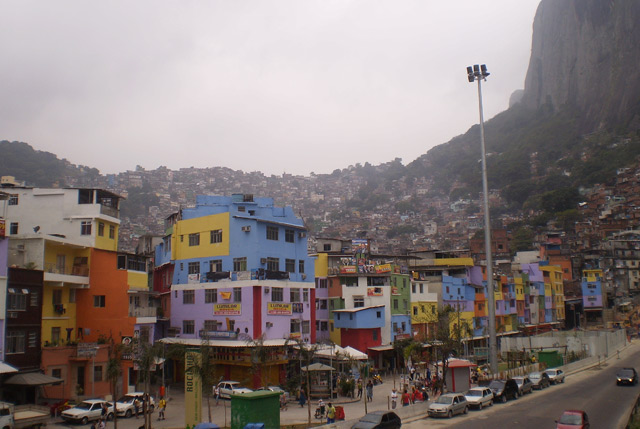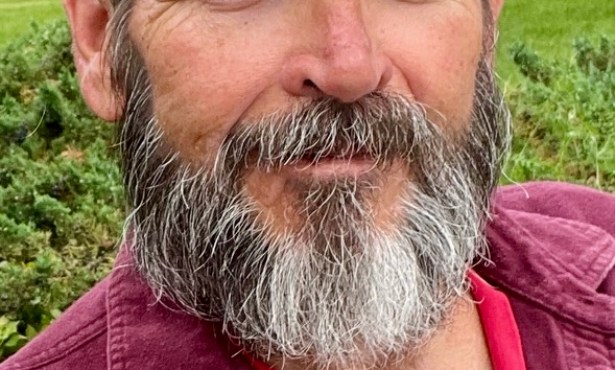Notorious Rio Neighborhood on Media Roller Coaster
View Into Rocinha Favela Ends With a Bang

The month of August was an exciting, unpredictable one for Rio de Janeiro’s biggest favela, Rocinha. From the week-long television endeavor Força da Rocinha, to the pitting of Rio’s biggest rival forces – the police and bandidos – against each other on the streets of São Conrado, Rocinha has been rocked with both positive and negative attention in the last few weeks—up and down, ultimately coming out on bottom.
The week of August 9, Rede Record, Brazil’s oldest and second biggest media network, aired a six-day-long series of positive reports about Rocinha. TV crews entered the favela and compiled footage of community members, cultural phenomena, and projects with interesting stories. Subjects included housing, art, music, tourism, education, and nongovernmental organizations. The series also focused on ambitious, resourceful community members and foreigners who, intrigued by the community, go there to live and do volunteer work. The institute where I teach English, the Instituto dois Irmãos, received a fair amount of attention; some of my colleagues and students were excited to make it onto the air.
The coverage was important not just for Rocinha but for all of Rio. Of the approximately two thirds of Rio de Janeiro’s population living in upper-class neighborhoods, most never venture into favelas. The preconceito, or bias, surrounding the city’s lower class neighborhoods is such that most adults are terrified of the favela while their kids only enter to buy drugs. The paradigm is detrimental: The upper class ignores the despised favelas except to take advantage of their economic foundation—drug trafficking. In other words, the former fuels the problems associated with the latter.
But Rede Record was willing to put reporters right into the becos (tiny winding alleyways) of Rocinha. They provided all of Brazil with a view into the favela that they would never get from the outside of a boca de fuma, or drug vending station. The wealth of positive information about, and beautiful images of, the notorious favela was a needed step in validating the community and defusing the upper class’s paranoia about the working-class communities.
But then, on the fateful morning of Saturday, August 21, less than a week after Força da Rocinha aired, all progress was reversed. Perhaps you saw some of the headlines. A skirmish, now widely understood as originating in a misunderstanding, broke out into open fire between police and bandidos, and resulted in about an hour of shooting, the hijacking of a garbage truck, the taking over of the five star Hotel Continental by armed bandidos, and the death of one woman.
Actually, if you didn’t catch any of the international headlines, you’re better off. According to some American reports, Rio was a war zone, as bandidos invaded peaceful neighborhoods with their giant guns, disturbing peace all over the place. But the explosions I woke up to that morning were not the sounds of a gun battle between the military police and the bandidos. Not precisely.
The general consensus of the community on the details of that morning are that a police officer who is routinely stationed by the entrance to Rocinha fired when he saw the current drug lord of Rocinha returning from a baile (a funk Carioca party) in neighboring favela Vidigal. He impulsively decided to assassinate the drug lord. He failed. Bandidos immediately took action. They fired communicative warning shots and fireworks into the air.
This particular pattern of explosions is a signal that community members recognize. They aren’t like the booms that we wake up to the morning of the drug lord’s birthday or a Brazil World Cup game. Fireworks followed by 12 loud, evenly spaced booms means there is trouble with the police. As the explosions travel up the mountain, members of the criminal faction and community members alike are alerted of the crisis. They send the former to prepare and the later to wait inside for a couple hours.
The system worked well. Bandidos rushed to the bottom of the hill and out into the wealthy streets of neighboring São Conrado while their maestro took cover inside Rocinha. Gunshots were abundant, but were evidently just for noise. Only one person – a woman affiliated with the drug trade – was shot fatally, and it was, according to rumor and media accounts alike, by the police and on purpose.
The skirmish ended quickly, and everything went back to normal. Its origins are suspicious. It’s as if the police waited eagerly for the Força da Rocinha series to finish its little run on Rede Record before instigating something they knew the media would spin out of control. All the positivity and optimism of the weeklong series was damped out like a struggling campfire, and the community was transformed once again, in the national consciousness, into a dangerous, violent, drug-ridden, uncivilized slum. Almost all networks painted a portrait of a war zone. MSNBC tastelessly quoted a Brazilian who compared the streets of São Conrado to Iraq. A few [all non-American] networks discussed the origins of the skirmish, but none bothered to consider the incident from the perspective of the main character – Rocinha itself.
And so it goes. The complex issues of Rio de Janeiro play out in little explosions over time. Any day now, the military police will enter the favelas in pursuit of their goal of pacifying favelas by wiping out their drug-trafficking foundations.
Soon to come are more details on the intricate, hierarchical drug trading system and the inevitable coming war with the military police. In the meantime, don’t worry: For me and the some quarter of a million people living in Rocinha, it’s not as dangerous they say.



